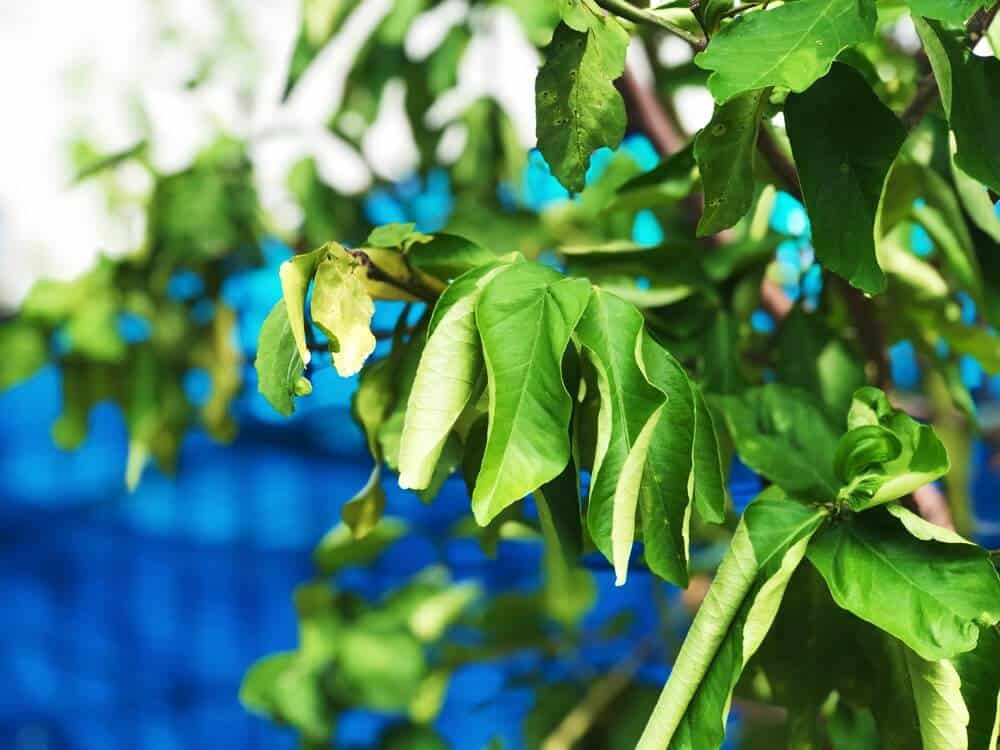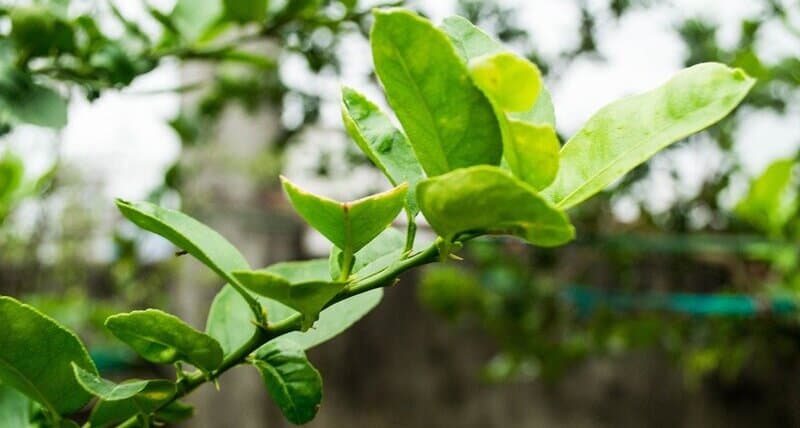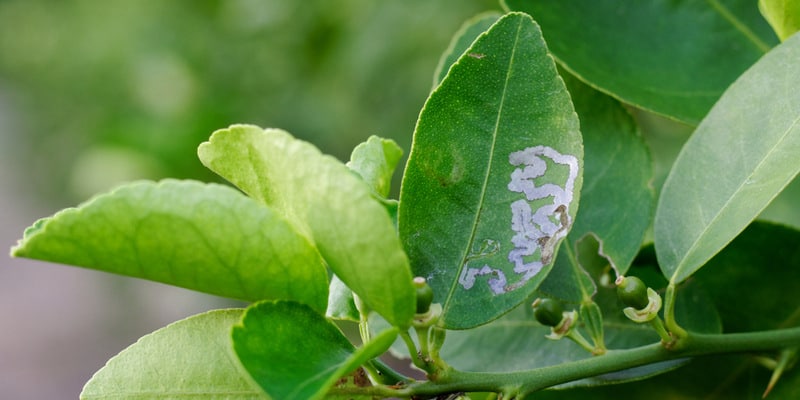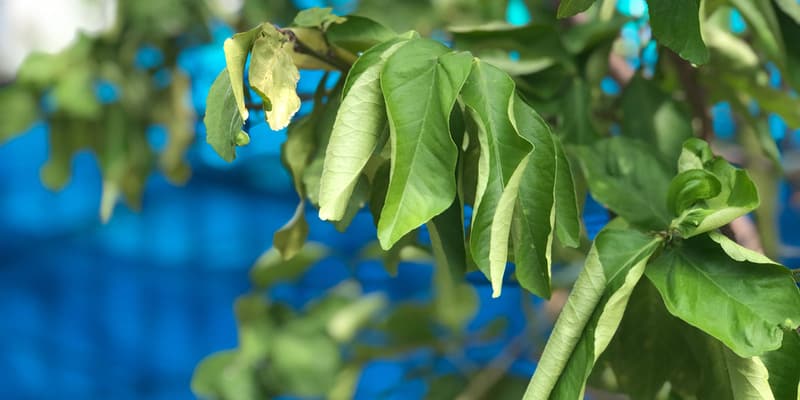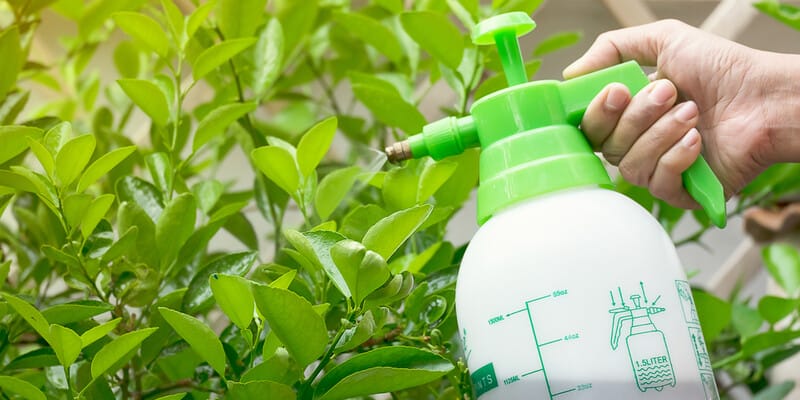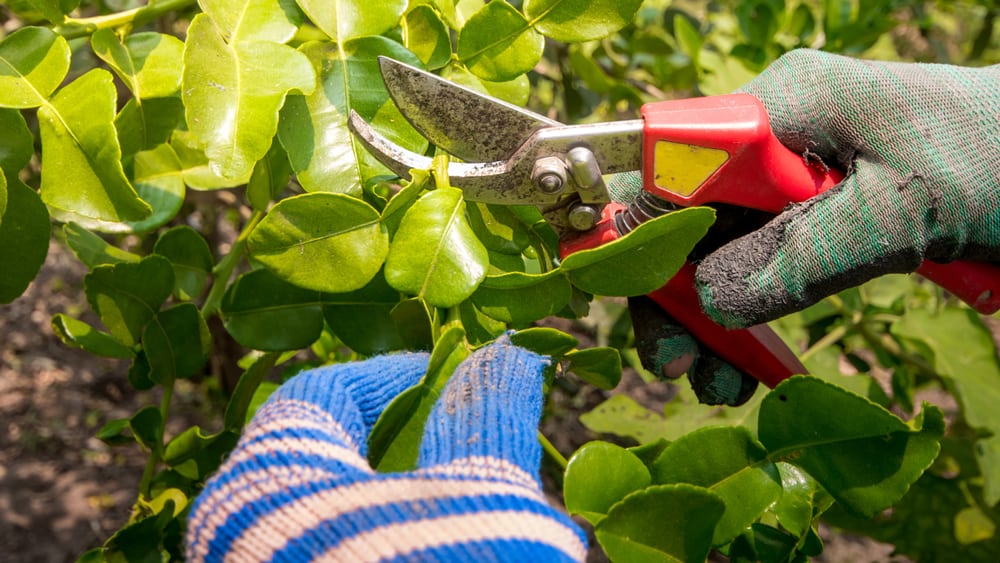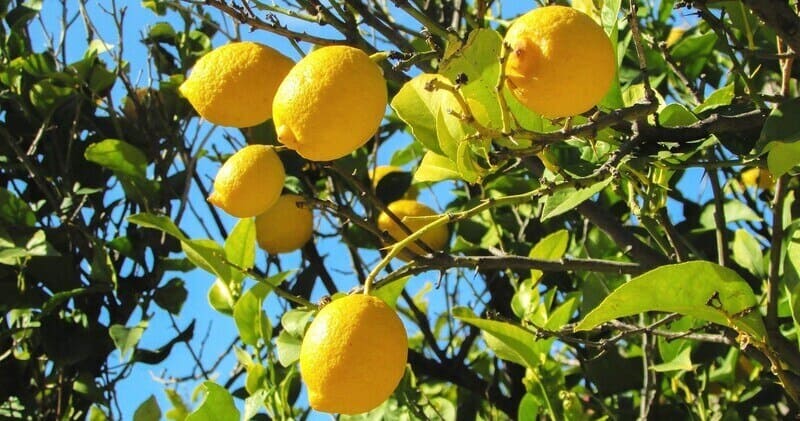So you watered your fruit trees, fed them well, and went full-on hipster plant parent on them. Armed with your coffee grounds and crushed eggshells, you followed every rule in the book (plus a little extra) on how to coax big, juicy fruits out of your citrus trees. Still no luck.
You always thought that growing a lime tree wasn’t too tricky, but now you’re unsure. Your once-vital citrus plants are as glum as a dreary Monday morning. They’re showing no signs of bearing fruit any time soon and you’re starting to get worried. After a closer look, you notice that the leaves of your citrus plants are curling. You’re sure that wasn’t the case when your tree was still a chirpy little bundle of joy.
What could have gone wrong?
You’re face-to-face with a problem all too common among citrus plant owners. While it’s simply called a ‘citrus leaf curl’, it’s an issue you shouldn’t take as lightly as when you got a bad perm.
What is citrus tree leaf curl?
Leaf curl on citrus plants is an issue many garden owners know all too well. When you see your lemon and lime tree leaves curling, it’s a red flag that your fruit trees are under attack. The leaves of your plant will have a distorted or warped look and may feel brittle to the touch.
Curling leaves aren’t just unattractive to look at. They can be a problem to your plant’s growth. By curling up, the leaves have a hard time taking in sunlight needed for photosynthesis and fruit development. Think of citrus leaf curl as a heist on your citrus trees. It can be caused by any or all of the following:
- Disease
- Pests
- Underwatering
- Extreme weather conditions
Disease
While not all fungi are harmful to citrus plants, some fungal infections such as bacterial blast and botrytis disease can damage your plants’ leaves.
Citrus canker, lime leaf blotch, and other lime tree diseases cause distortions that can lead to lime tree leaf curl. Similarly, sick lemon trees will show signs of poor growth through splotchy, dry, or curling leaves.
Take a look at some pictures of lemon tree diseases below:
Pests
Pests on citrus trees suck the sap from your plant and cause the leaves to curl. Examples of these pests are aphids, mites, psyllids, and the scales on lemon trees. Over time, these pests can cause leaf deformations to appear.
Citrus leafminers are also citrus-loving pests, but they don’t suck sap like those mentioned above. Instead, citrus leafminer larvae burrow into leaf tissues after hatching from their eggs and leave white trails on the leaf surface. Citrus leafminers aren’t particularly life-threatening to your plant if their population is low. Too many tunnels on your citrus leaves, however, can make your plant susceptible to leaf curl and distortion.
Underwatering
Drought stress is a common cause of leaf curl. Underwatered citrus plants look lackluster and have a hard time producing fruits. When you notice your lemon tree leaves curling, this may mean that your plant is dehydrated.
Extreme weather conditions
Growing a lemon tree and other citrus plants requires warmth and sunshine, but too much heat can cause citrus leaves to curl. Similarly, cold temperatures can also cause your plant’s leaves to curl.
Leaf curl treatment
Treatment of fruit tree leaf curl can vary depending on the cause. If you’re unsure about the cause of your plant’s condition, consulting with local gardeners is your safest bet. There are also good DIY solutions you can do at home to manage your plant’s health in the meantime.
These are our best tips on how to treat leaf curl:
How to treat leaf curl caused by disease
When it comes to treating leaf curl caused by disease, prevention is better than cure. A routine use of copper spray is an effective and inexpensive way to stop the growth of fungi and parasitic plants on your citrus trees.
How to treat leaf curl caused by pests
Use neem oil or insecticidal soap to treat citrus tree leaf curl. If the infestation is severe, a weekly treatment may be necessary for your plant to recover.
When applying insecticide, remember to spray generously on the leaves. This ensures that the insects are fully coated with oil. The undersides of the leaves should be checked as well for tiny pests feeding in clusters. When all the pests are gone, your plant can start to recover and the leaf curl on your citrus trees will disappear.
Tunnels caused by citrus leafminer larvae are unattractive on citrus leaves. Spraying both the top and bottom parts of the leaves with pest or eco oil every two weeks can destroy citrus leafminer eggs and stop their larvae from further populating. If the tunnels are not too rampant, another easy option is to simply allow the infestation to run its course.
How to treat leaf curl caused by underwatering
Among the causes of citrus leaf curl, drought stress is the easiest to cure. Lemon tree leaf curl, in particular, can be remedied by simply watering well to improve soil moisture. When your plant gets the hydration it needs, the curl in your citrus leaves will disappear.
How to treat leaf curl caused by extreme weather conditions
When you see your lemon or lime tree leaves curling during hot weather, simply transfer your plant to a well-shaded spot to protect it from the heat or cold. Add mulch on the ground surrounding your plant to regulate the soil temperature. Hydrating more frequently during warmer months will also help revive your citrus leaves.
Leaf curl prevention through pruning and trimming
Pruning and trimming regularly helps aerate your citrus trees and promote their growth. Removing dead branches helps to allow air and sunshine into shaded areas of your citrus trees and deters fungi from growing on them.
Skirting is another pruning and trimming method. This is done on citrus trees to allow air to circulate at the bottom part of the trunk and branches.
Maintaining citrus trees in your home
Citrus plants are quite popular among garden owners, but they’re also a magnet for pests, disease, and dehydration. At the first sign of citrus leaf curl, it’s best to seek professional gardening help immediately.
Your local gardening specialists will identify what’s causing the leaf curl on your citrus trees and recommend the right treatment. With proper care and maintenance, your beloved citrus trees will grow healthy and give you plenty of fruit to enjoy for years to come.

